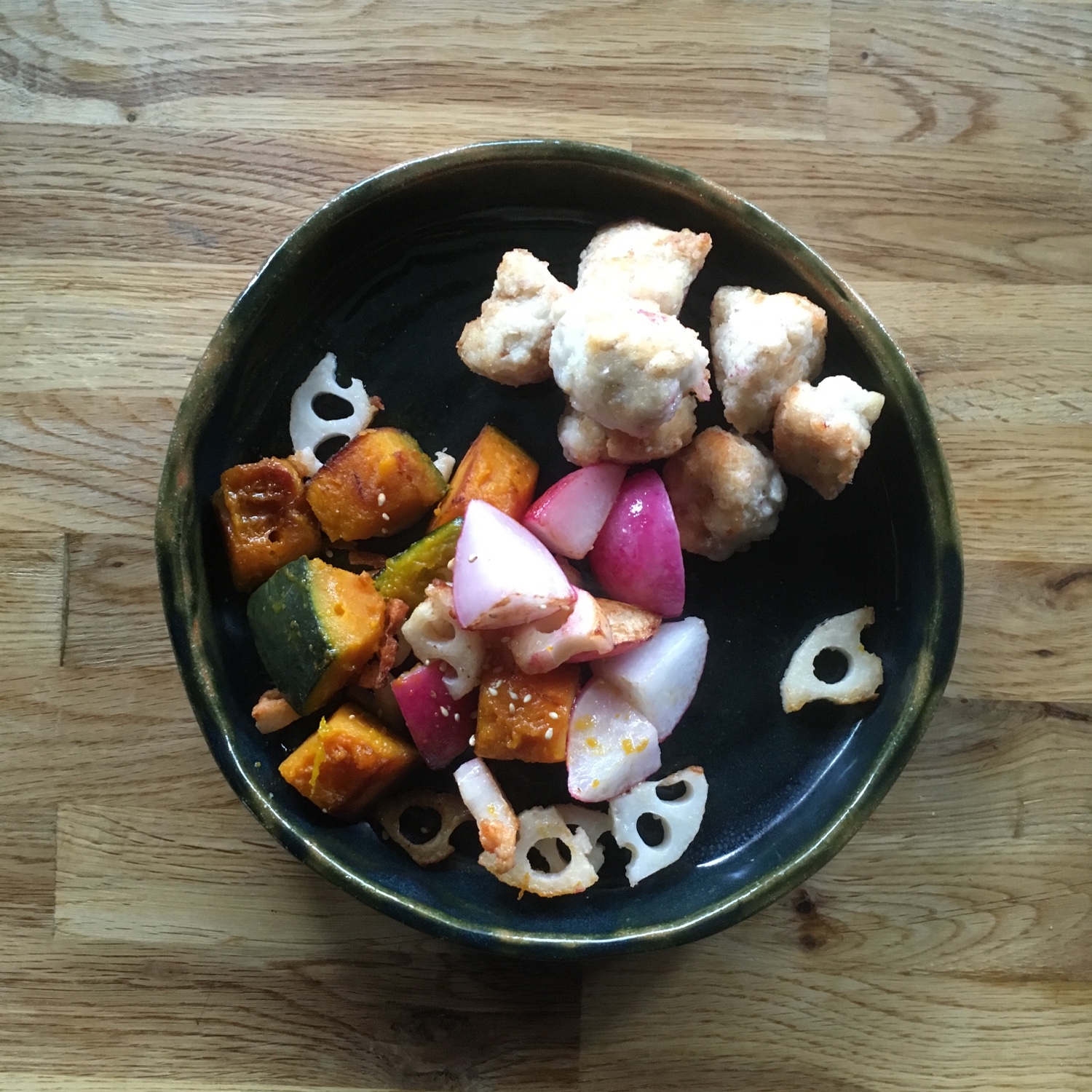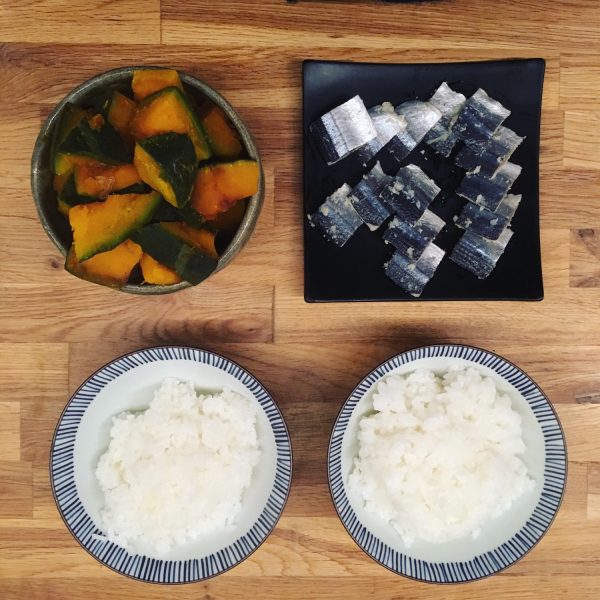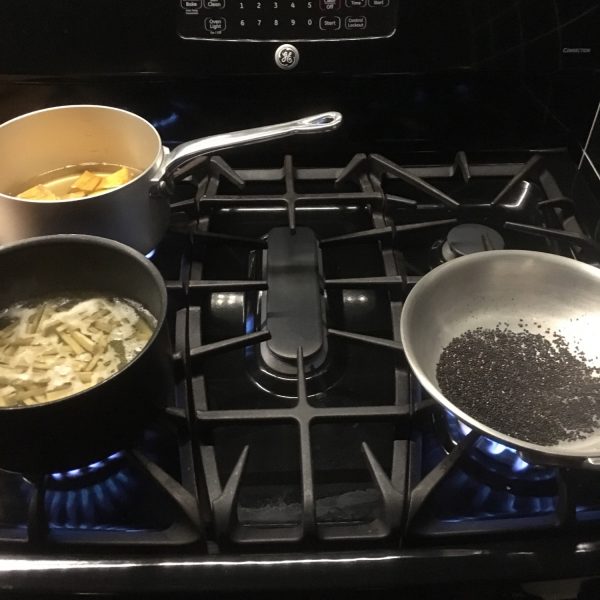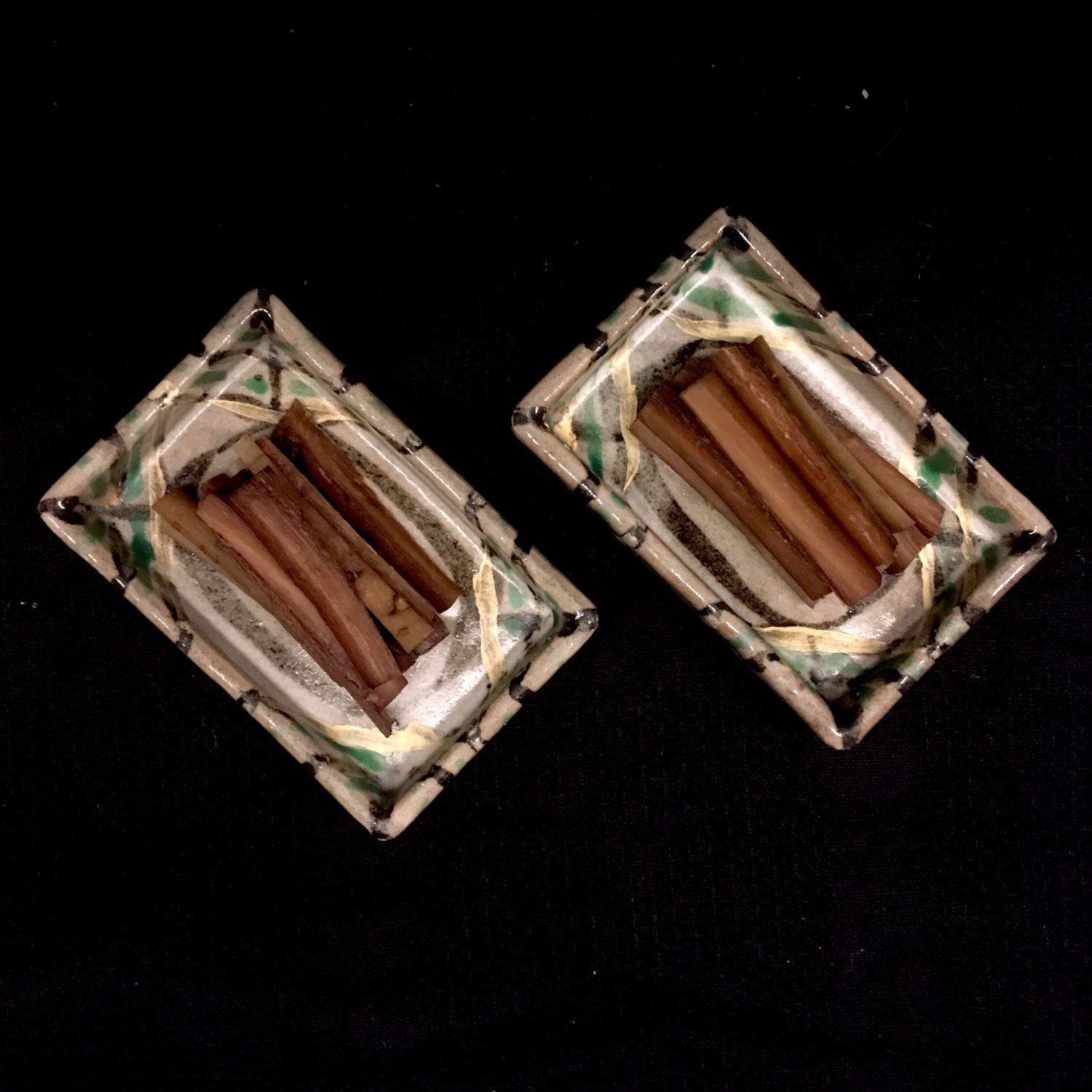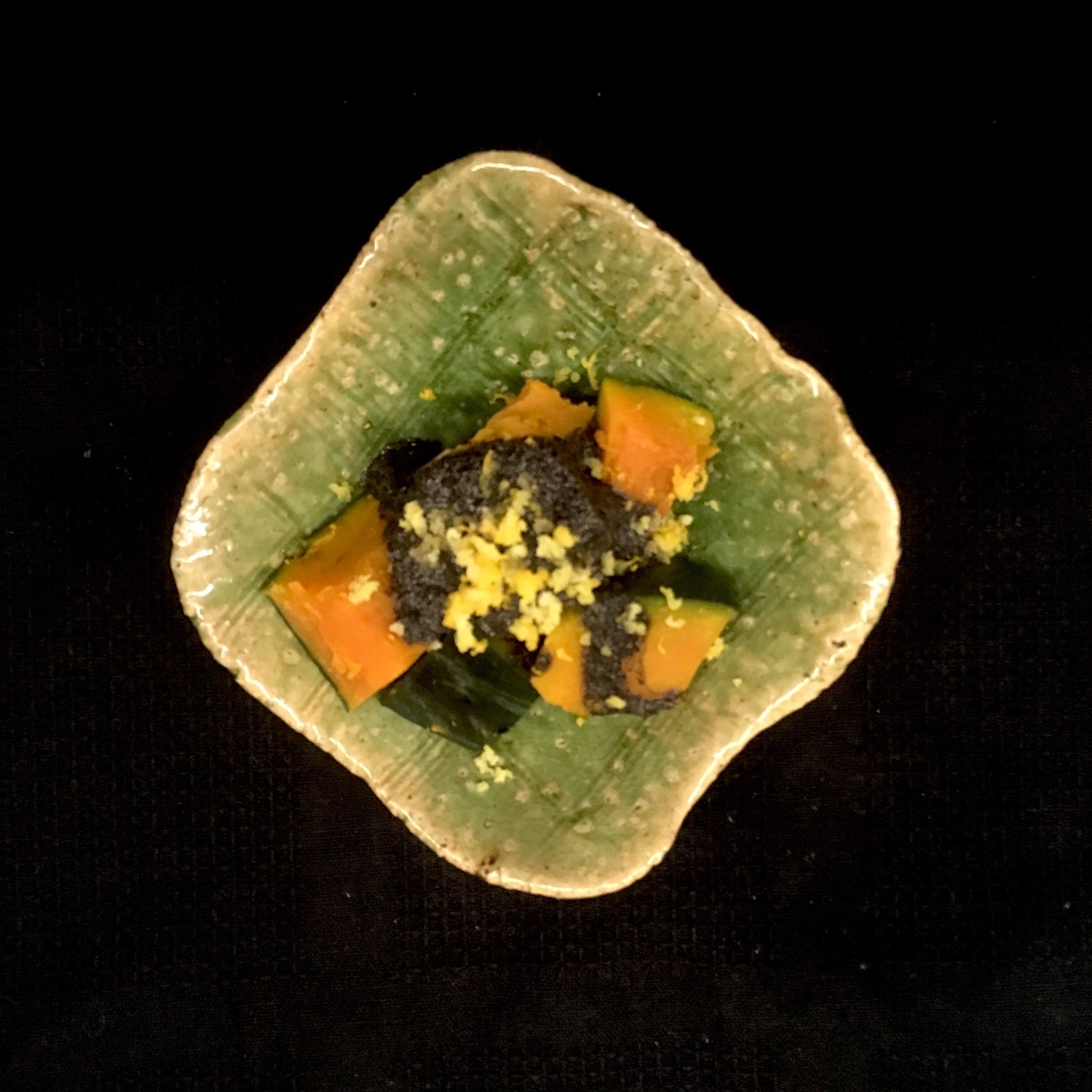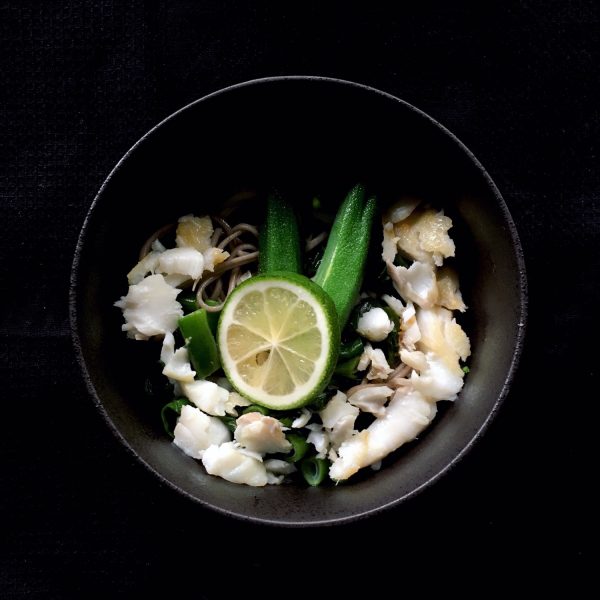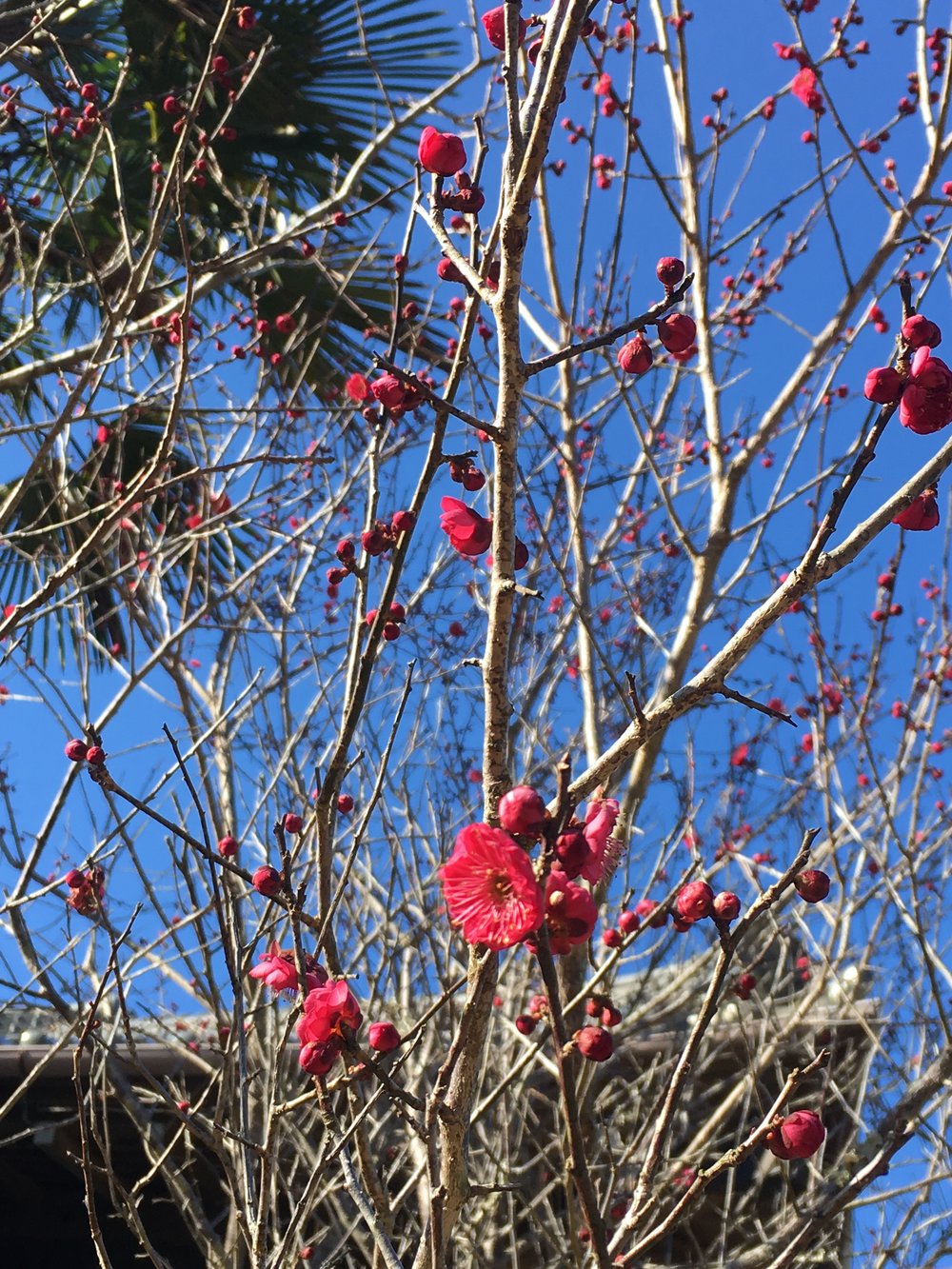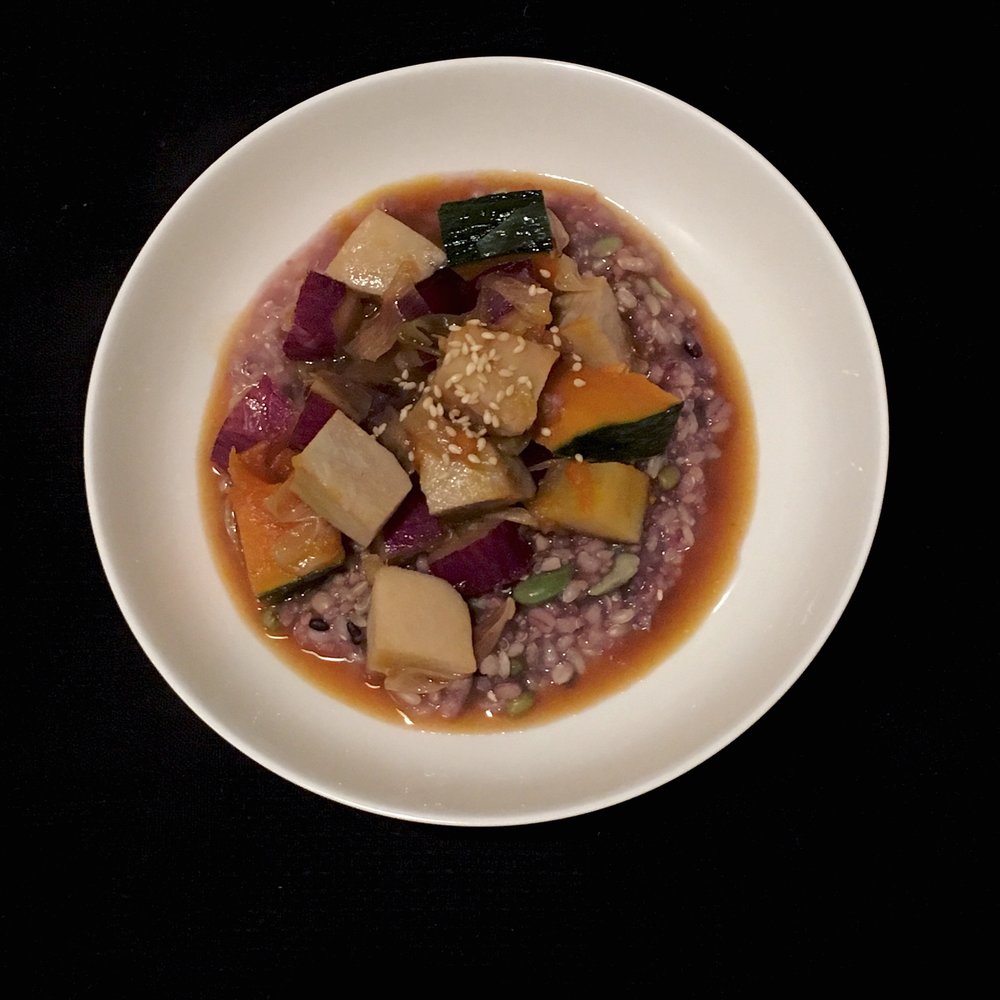All a sudden it has become very cold and warm food, rich and tasty is more than necessary. During the autumn I have used a lot of butternut squash, leaving the little Japanese kabocha on the side for a while, knowing that they would be right there when needed in the winter, as the season for kabocha is much longer (though you may find it year round when grown in green houses). And now the time has come to use it. kabocha, like most squashes and pumpkin is versatile and easy to cook. The great part with kabocha is that it actually doesn’t need to be peeled and cooking time is rather short. One of my favorite traditional Japanese recipe is to prepare it with dashi and soya sauce. It can be eaten hot, cold or reused after in other recipes. It is very simple to make and often found in bento boxes. Here is my recipe for the simmered kabocha.
Simmered kabocha (4 servings)
– 1/2 kabocha
– 40g of katsuobushi in flakes
– 2tbs of soya sauce
Wash the skin of the kabocha, remove the seeds (you can keep them to grill them to make snacks… or plant them)
Cut the kabocha in large bites with the skin on (only remove parts of the skin that is brownish or hard, usually the part that was in contact with the ground).
Put the kabocha in a pan and cover with water. Add the katsuobushi flakes in a tea bag, and cook at low heat until the kabocha is just soft (test with a bamboo toothpick). Do not over cook, you’ll end up with purée. Remove all liquid and the bag of katsuobushi. Add the soya sauce. Eat right away, or when cold.
I used the leftovers in a sautéed vegetable dish. With a bit if oil, the kabocha becomes golden and even more delicious.
